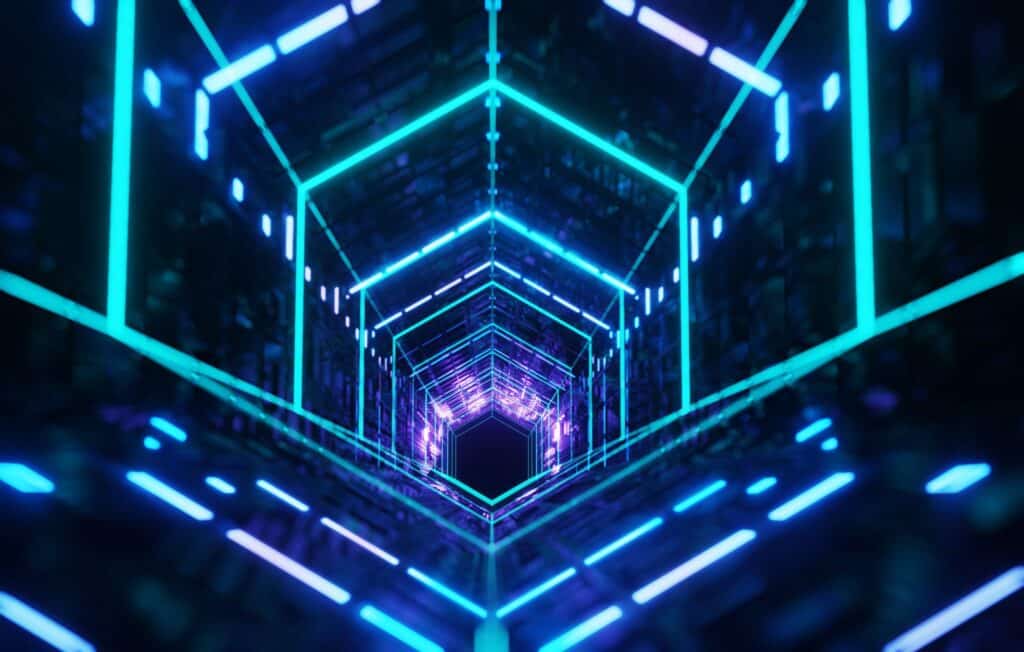Tron network
The Tron network is a widely used blockchain platform that specialises in decentralised applications (dApps) and the exchange of digital content. Over the years, Tron has attracted attention through both innovation and controversy. As with all blockchain-based systems, security is a key concern. In this overview, the key vulnerabilities and security risks of the Tron network are analysed in detail to provide a comprehensive understanding of the potential threats.
Technical basics of the Tron network
Tron utilises a Delegated Proof of Stake (DPoS) consensus mechanism where elected Super Representatives (SRs) are responsible for validating transactions and generating new blocks. The platform supports smart contracts, token creation (TRC10 and TRC20) and a variety of decentralised apps.
Architecture and components
- Node structure: Full Nodes, Solidity Nodes, Super Representatives
- Smart contracts: Execution on the Tron Virtual Machine
- Wallets and interfaces: TRONLink, hardware wallets, web wallets
Weak points in the architecture
Centralisation through Super Representatives
Although Tron is advertised as a decentralised platform, the DPoS model harbours a certain centralisation risk. Only 27 Super Representatives have the right to create blocks and validate transactions. A merger of a few SRs could potentially control the network and enable manipulation, such as the censorship of transactions.
Attack vectors on super representatives
Super Representatives can be the target of targeted attacks, in particular by:
- DDoS attacks that affect the operation of one or more SRs
- Social engineering or hacking attacks on the keys of the SRs
- Collusion between SRs to manipulate the voting system
Smart contract vulnerabilities
As with Ethereum, faulty smart contracts can also harbour considerable risks on Tron. Examples:
- Reentrancy attacks
- Integer overflow/underflow
- Insufficient access controls
- Unchecked external calls
Insufficient checking and troubleshooting before the contracts are published can lead to serious financial losses.
Network and consensus manipulation
One-off or coordinated attacks on the network, such as Sybil attacks, could attempt to influence the voting process by generating many fake identities. There is also the theoretical possibility of a 51% attack if a party group succeeds in concentrating the majority of votes.
Weaknesses in token standards
The TRC10 and TRC20 token standards can lead to security vulnerabilities if implemented incorrectly in smart contracts. Insufficient standardisation and a lack of testing mean that faulty or fraudulent tokens can get into circulation.
Security risks due to applications and user behaviour
Phishing and social engineering
Users can fall victim to phishing through manipulated websites (e.g. fake wallets or dApps). Criminals try to steal private keys or access data in this way.
Insecure wallets and third-party apps
The use of wallets, browser plugins or mobile apps from third-party providers is associated with particular risks. Vulnerabilities in the software can lead to attackers accessing stored private keys and emptying accounts.
Rug pulls and fraudulent smart contracts
There are numerous tokens and dApps in the Tron ecosystem that have been created by scammers. In the area of DeFi (decentralised finance) and NFT projects in particular, there are repeated rug pulls in which developers suddenly withdraw all their funds.
Lack of regulation and control
As Tron operates internationally and there is little regulatory control, fraudulent projects and money laundering can be promoted. Users are often left to their own devices and have hardly any legal options for claiming losses.
Protocol and infrastructure risks
Bugs and vulnerabilities in the Node client
Like other blockchain projects, Tron is not free from software errors. Vulnerabilities in the core client can have fatal consequences, for example:
- DoS attacks on the network through faulty packets
- Manipulation of the chain by exploiting bugs
- Unintentional forks due to unsynchronised nodes
Network monitoring and deanonymisation
Although Tron, like many blockchains, offers pseudonymity, analyses of transaction patterns and IP address tracking can facilitate de-anonymisation. Privacy is particularly jeopardised for large transactions.
Attacks on communication
As many Tron services work via APIs and open network interfaces, attacks such as man-in-the-middle (MITM) are possible. Wallets and dApps in particular are affected if no encrypted communication is used.
Economic and governance risks
Concentration of voting rights
The possibility of buying or bundling votes can lead to "election recommendations" and centralised concentrations of power, which limits the democratic legitimacy of the consensus.
Susceptibility to pump-and-dump schemes
The openness of the Tron ecosystem makes it particularly susceptible to price manipulation by inexperienced or greedy players.
Lack of transparency in project developments
Many projects in the Tron environment do not publish complete or verifiable information on their development progress or team structures.
Risk minimisation measures
Regular smart contract audits
Independent security reviews of contract sources help to detect and eliminate vulnerabilities in good time.
Sensitisation and education
Only informed users can minimise risks. Education and warnings about phishing, fraud and insecure wallets are key.
Strengthening decentralised governance
The introduction of more transparent and decentralised decision-making mechanisms can help to counteract the concentration of power and nepotism.
Technical improvements
Regular updates of the node client, introduction of privacy functions and encryption of communication increase network security.
As a fast, scalable blockchain, the Tron network offers many advantages for developers and users of decentralised applications. Nevertheless, there are numerous vulnerabilities and security risks - from technical errors and governance problems to social attack methods. To realise the potential of the network and maintain the trust of the community, a continuous focus on security, education and technological development is essential.
Our role
Time and again, clients who have suffered financial losses in the Tron network turn to us. In view of the special characteristics of this network, prompt and targeted action in the event of a loss is of central importance.
The Krypto Investigation GmbH is at your side as a reliable partner to limit damage and help you restore your assets.


